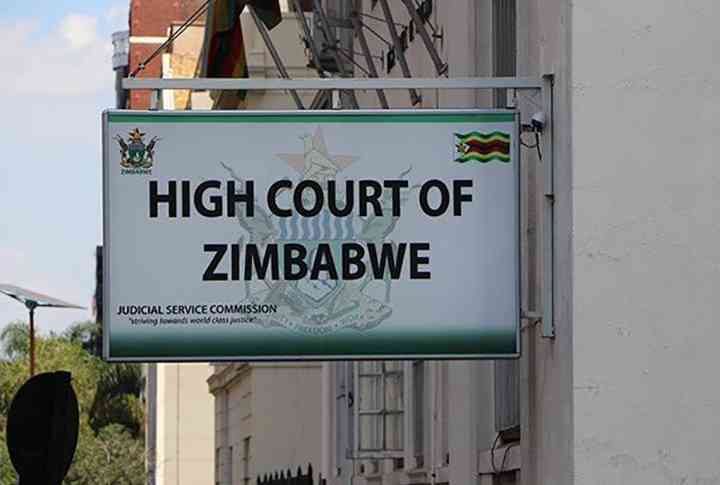
ZIMBABWE is set to experience more hours of load-shedding as water levels at Kariba Dam have dropped to crisis level as a result of the El Niño-induced drought being experienced in the southern Africa region, NewsDay has learnt.
Zimbabwe received below normal rainfall in the 2023/24 rain season as a result of theEl Niño phenomenon, a situation that has seen most rivers and water bodies drying up as Zimbabwe enters the peak of the lean season.
This has left the country in a situation whereby it could soon be forced to turn off it power generation turbines at Kariba Hydroelectric Power Station.
According to an update by the Zambezi River Authority — the binational entity managing water at Kariba — there is insufficient water in the largest manmade lake to continue generating electricity at the biggest power generation plant in the country.
When at full supply, the water levels will be at 488,50 metres, but at the present moment it’s at 476,70m and left with only 1,2m live storage water, which is water available for power generation.
Statistics availed by the Zimbabwe Power Company showed that in the past week including yesterday, Kariba has been generating 215 megawatts (MW) everyday against an installed capacity of 1 050MW.
The figures also showed that last Monday, power generation at Hwange Thermal Power Station was at 780MW, but jumped to 1 099MW the following day, which it maintained until Thursday.
On Friday, Hwange generated 1 089MW, then Saturday (1 084MW), while yesterday it further went down to 1 004MW against an installed capacity of 1 560MW.
- ZVDT laments lack of development in Zambezi Valley
- €30m set for Kariba Dam wall rehab
- Letters: Democratise natural resource governance
- Lubimbi villagers relocation set for next year
Keep Reading
Independent power producers have also witnessed a knock in production, from 47MW from Monday to Thursday, then 39MW on Friday and Saturday, before falling to 31MW yesterday.
Zimbabwe has been experiencing recurrent power supply shortages from as far as back as 2003, with intense power cuts between 2006 and 2013.
Power cuts are getting worse each year as demand outstrips supply, while technical faults at the Chinese refurbished Hwange Thermal Power Plant have also affected power generation.
Online watchdog Zimbabwe Price Check yesterday posted on its X (formerly Twitter) handle urging Zimbabwe and Zambia to “reassess their dependence on Kariba hydroelectric power”.
Zimbabwe and Zambia share water equally for power generation.
Zimbabwe Price Check also said the Zimbabwe Electricity Transmission and Distribution Company (ZETDC) had made several missteps accusing the parastatal of failing to adapt to climate change by switching to renewable power such as solar or wind energy.
The online watchdog also accused ZETDC of not having a proper power management schedule as well as continuing to supply power to defaulters at the expense of prepaid customers.
Of late, most of the power produced is meant for industry, while households experience daily outages going for more than 15 hours.
Zesa Holdings executive chairperson Sydney Gata recently told the media they were looking at installing a utility scale battery energy storage system to minimise power cuts being experienced in the country.
“The system will provide three hours of 600mHW during morning and evening peaks. This will substantially reduce load-shedding, besides providing some benefits to system operations. The project is already at the procurement level. The energy to charge the batteries will be supplied or procured off peak,” Gata said.
This, according to Gata, is one of the immediate solutions the company is going to implement to reduce power cuts across the country.
The power crisis has not only hit Zimbabwe.
Yesterday, Zambia said it was initiating a punishing power-rationing schedule.
“Zesco Limited informs its customers and the public that it is experiencing a significant power shortfall, which has constrained its ability to implement the 17-hour power rationing schedule that was announced earlier to commence on September 1, 2024,” the neighbouring country’s power utility said in a statement.
“This unforeseen development arises from the following factors: 1) Reduced power imports from the southern circuit via Namibia due to a converter fault on the transmission line. During this import route constraint, Zesco is receiving only 33MW of the 160MW scheduled imports; 2) Ongoing annual plant maintenance works at Maamba Collieries Limited, which has temporarily taken 150MW off the national grid.
“To cushion the impact of this power supply shortfall, Zesco has undertaken the following measures: [1] Providing power supply to residential customers for up to three hours per day on a rotational basis to support access to household essentials such as water pumping; [2] Prioritising essential services such as health, water pumping, and security; [3] Installing diesel-powered generators in some markets to support business continuity.”











